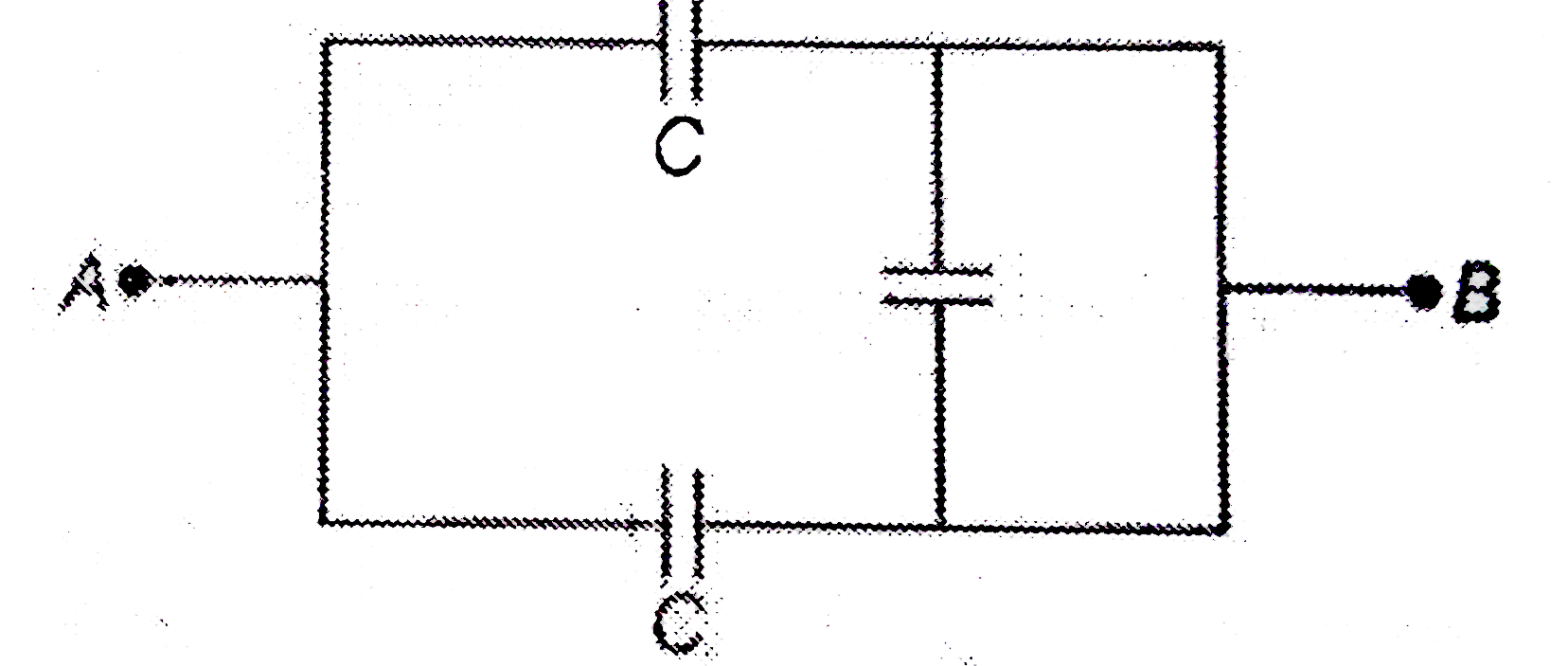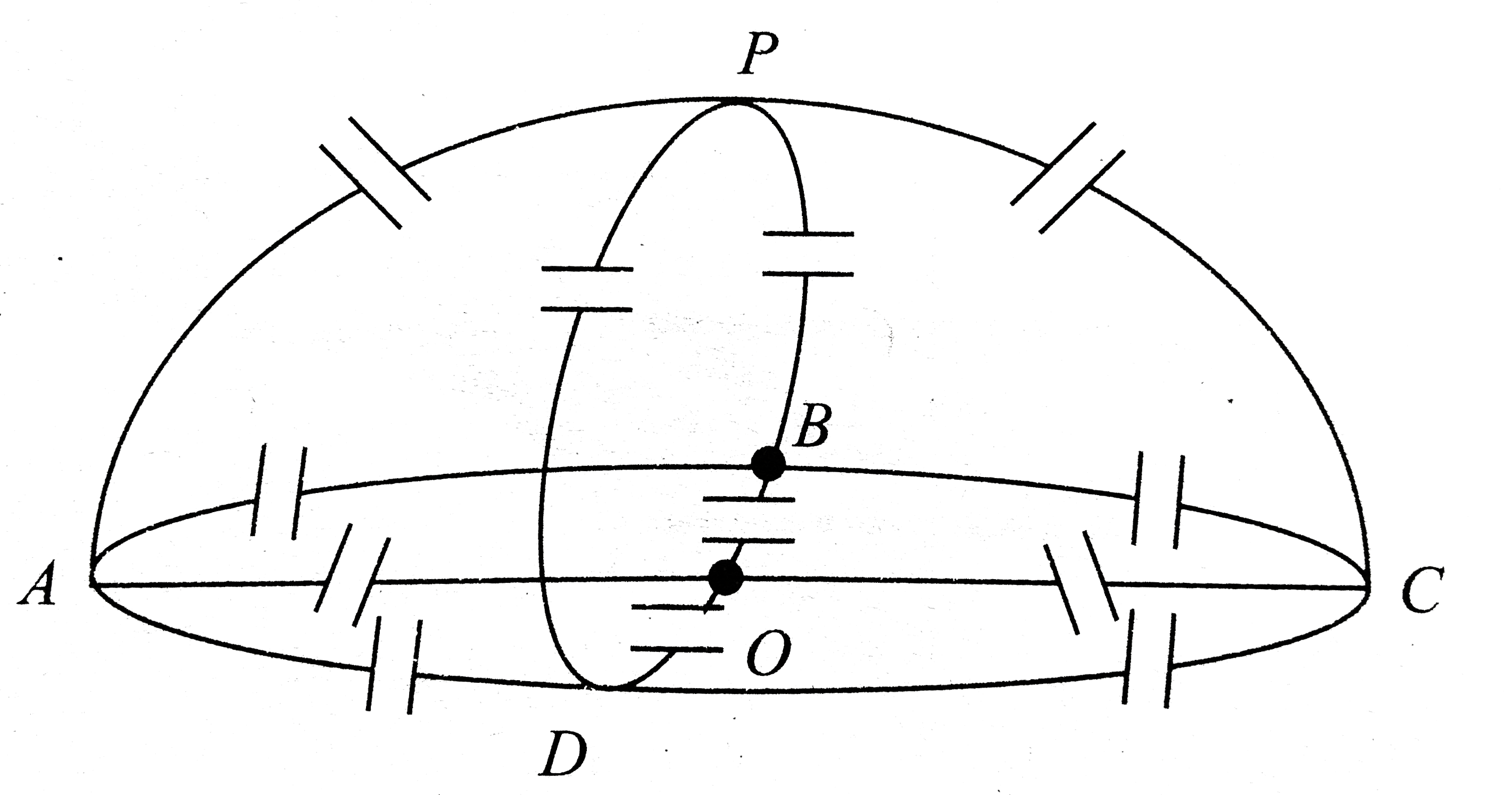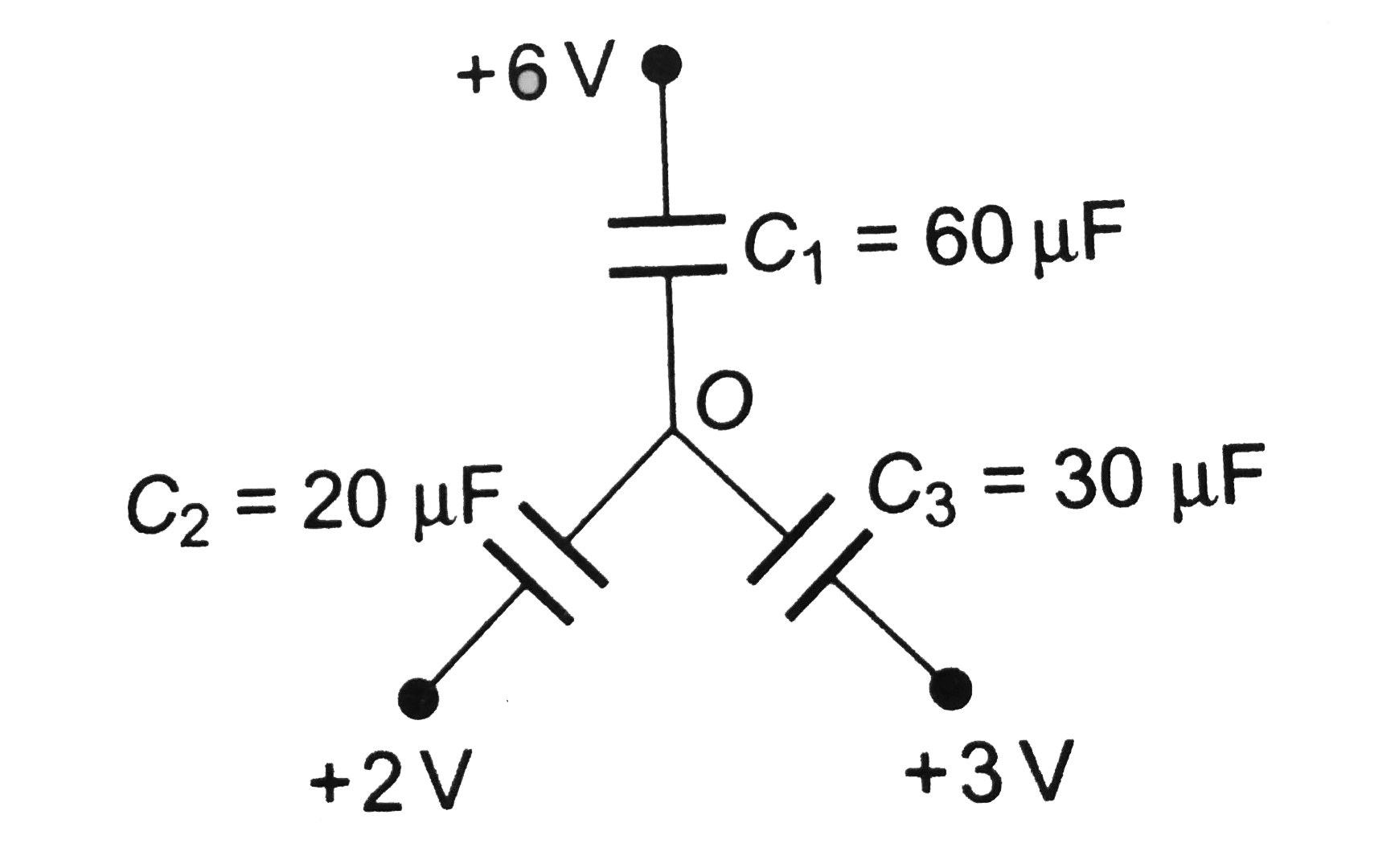The equivalent capacitance of three capacitors of capacitance C1:C2 and C3 are connected in parallel is 12 units and product C1.C2.C3=48. When the capacitors C1 and C2 are connected in parallel, the equivalent capacitance is 6 units. then the capacitance are
2,3,7
1.5,2.5,8
1,5,6
4,2,6
The correct Answer is:d
To solve the problem, we will follow a systematic approach using the given information about the capacitors.
Step 1: Set up the equations based on the problem statement
We are given three capacitors with capacitances C1,C2, and C3. The following equations can be derived from the problem:
1. The total capacitance when all three capacitors are connected in parallel:
C1+C2+C3=12(Equation 1)
2. The product of the capacitances:
C1⋅C2⋅C3=48(Equation 2)
3. The total capacitance when C1 and C2 are connected in parallel:
C1+C2=6(Equation 3)
Step 2: Express C3 in terms of C1 and C2
From Equation 3, we can express C3:
C3=12−(C1+C2)=12−6=6(Equation 4)
Step 3: Substitute C3 into Equation 2
Now, substituting C3 from Equation 4 into Equation 2:
C1⋅C2⋅6=48
Dividing both sides by 6 gives:
C1⋅C2=8(Equation 5)
Step 4: Express C1 in terms of C2
From Equation 5, we can express C1:
C1=8C2(Equation 6)
Step 5: Substitute C1 into Equation 3
Substituting Equation 6 into Equation 3:
8C2+C2=6
Multiplying through by C2 to eliminate the fraction:
8+C22=6C2
Rearranging gives us a quadratic equation:
C22−6C2+8=0(Equation 7)
Step 6: Solve the quadratic equation
We can solve Equation 7 using the quadratic formula:
C2=−b±√b2−4ac2a
Here, a=1,b=−6,c=8:
C2=6±√(−6)2−4⋅1⋅82⋅1
C2=6±√36−322
C2=6±√42
C2=6±22
This gives us two solutions:
C2=82=4orC2=42=2
Step 7: Find corresponding values of C1
Using Equation 6 to find C1:
1. If C2=4:
C1=84=2
2. If C2=2:
C1=82=4
Step 8: Find C3
From Equation 4, we already found:
C3=6
Final Result
Thus, the capacitances are:
- C1=2,C2=4,C3=6 or
- C1=4,C2=2,C3=6
Summary
The capacitances are C1=2 units, C2=4 units, and C3=6 units.
---
We are given three capacitors with capacitances C1,C2, and C3. The following equations can be derived from the problem:
C1+C2+C3=12(Equation 1)
C1⋅C2⋅C3=48(Equation 2)
C1+C2=6(Equation 3)
From Equation 3, we can express C3:
C3=12−(C1+C2)=12−6=6(Equation 4)
Now, substituting C3 from Equation 4 into Equation 2:
C1⋅C2⋅6=48
Dividing both sides by 6 gives:
C1⋅C2=8(Equation 5)
From Equation 5, we can express C1:
C1=8C2(Equation 6)
Substituting Equation 6 into Equation 3:
8C2+C2=6
Multiplying through by C2 to eliminate the fraction:
8+C22=6C2
Rearranging gives us a quadratic equation:
C22−6C2+8=0(Equation 7)
We can solve Equation 7 using the quadratic formula:
C2=−b±√b2−4ac2a
Here, a=1,b=−6,c=8:
C2=6±√(−6)2−4⋅1⋅82⋅1
C2=6±√36−322
C2=6±√42
C2=6±22
This gives us two solutions:
C2=82=4orC2=42=2
Using Equation 6 to find C1:
1. If C2=4:
C1=84=2
2. If C2=2:
C1=82=4
From Equation 4, we already found:
C3=6
Thus, the capacitances are:
- C1=2,C2=4,C3=6 or
- C1=4,C2=2,C3=6
The capacitances are C1=2 units, C2=4 units, and C3=6 units.
Similar Questions
Deduce an expression for equivalent capacitance C when three capacitors C1,C2andC3 are connected in parallel.
View SolutionTwo capacitors with capacitances C1andC2 are connected in parallel. Find the resultant capacitance.
View SolutionTwo capacitors with capacitances C1andC2 are connected in series. Find the resultant capacitance.
View SolutionObtain an expression for equivalent capacitance when three capacitors C1,C2andC3 are connected in series.
View SolutionThe equivalent capacitance of the combination of three capacitors each of capacitance C between A and B as shown in figure is

View SolutionFind the equivalent capacitance between A and B. All the capacitors have capacitance C.

View SolutionFind the equivalent capacitance between A and B. All the capacitors have capacitance C.

View SolutionFind the capacitance between P and O. Each capacitor has capacitance C.
 .
.
View SolutionThree uncharged capacitors of capacitance C1,C2 and C3 are connected to one another as shown in figure. The potential at O will be

View SolutionTwo identical capacitors are first connected in series and then in parallel. The ratio of equivalent capacitance is
View Solution
